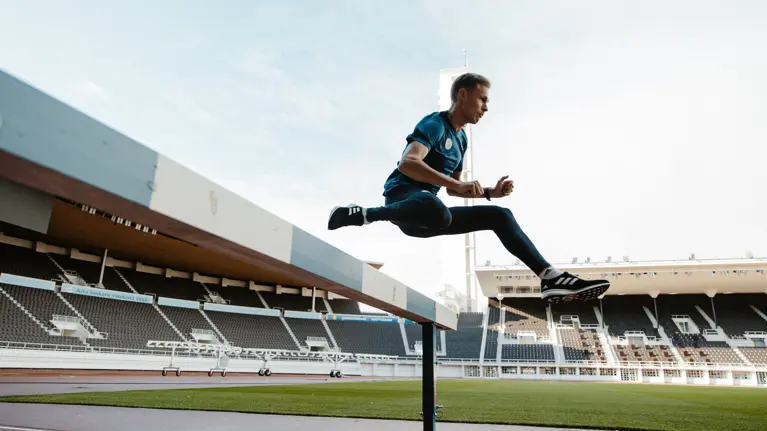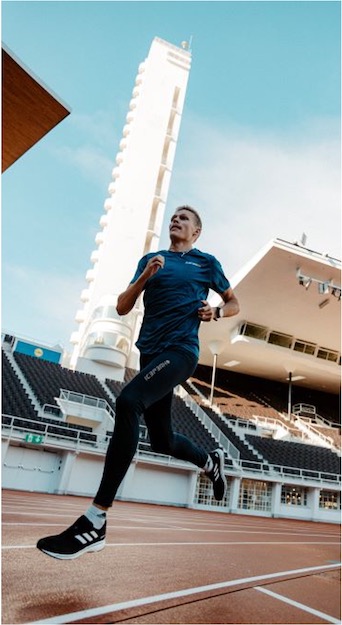
Data supports steeplechaser on his way to Paris Olympics
Published: 20 May 2022
Long-distance runner Topi Raitanen made his Olympic debut at the Tokyo Summer Olympics in 2021 with a fine result, finishing eighth in the 3,000-metre steeplechase. As the best European in that Olympic final, he has had a bit over two years to get ready for the Paris Olympics. What does that require from the athlete’s coach?
Topi Raitanen’s coach Janne Ukonmaanaho is a four-time Finnish champion in the 3,000-metre steeplechase. Ukonmaanaho’s own career ended with injury in 2016 in the Finnish Athletics Championships. He became Raitanen’s coach the same year. Unlike Ukonmaanaho, Raitanen has managed to steer clear of any major injuries.
“When I began coaching Topi, he had a stress fracture in his femur, and we took this into account in his training programme. Now he’s had five years without injuries. His results have also improved steadily, so we’re definitely doing something right.”
From orienteering to beating the clock
Before putting his focus on the steeplechase, Raitanen was also known for his orienteering. He has been able to put many of the qualities needed in orienteering to good use in his new sport.
“Plenty of varied training in his youth in different kinds of terrain g has created a good aerobic basis, muscular endurance and strong support muscles. Orienteering also gives a solid base for rapid changes of rhythm when running. At the beginning, we had to focus on the steeplechase technique, use of the upper body and track running technique.”
According to Ukonmaanaho, creating a training programme for elite athletes is always a balancing act to avoid straining the body too much.
“At the beginning of the career, athletes often develop quickly, with results improving by several seconds a year. However, as you get closer to the top, improving results is much harder and requires careful training programme planning, implementation and monitoring. What is entered in the training programme is, in a way, the coach’s best estimate on how much the athlete can take.”
The simplest way to monitor implementation is by means of a training diary.
“It is a diary of the distances run, speed, routes, heart rate, blood lactate levels, amount of sleep, and so on. In Topi’s case, an Oura ring and the FirstBeat heart rate variability figures are used for monitoring. Without daily measurements and monitoring, it is difficult to know if we are making any progress, or how the training is coming along and whether it is leading to the desired results.”
Ukonmaanaho considers Raitanen to be the ideal athlete to coach.“Topi follows his training programme religiously. He can also cope with plenty of training and knows his physical limitations. Topi is consistently enthusiastic about training. He also gives accurate feedback on his training, which makes the coach’s job easier.”
Boost from high altitude
Raitanen’s programme includes altitude training, the benefits of which have been well documented. Among those who have studied altitude training are Ari Nummela, director of sports physiology research at the Finnish Institute of High Performance Sport, and Juha Peltonen, Director of the Foundation for Sports and Exercise Medicine. Ukonmaanaho stresses the importance of research findings for coaching.
“Long-term studies of altitude training have increased our understanding of the optimal altitudes and how long such training should be. There is also evidence that altitude training doesn’t bring same benefits for all athletes, but we have seen that this training method has clearly worked well for Topi.”
“The purpose of altitude training is to increase red cell volume in the blood and thereby improve oxygen delivery. The increase in the red cell volume, however, is affected by the initial iron level in the blood. Therefore the athlete’s basic blood count, including the ferritin levels, must be tested in advance. At the beginning of altitude training, the athlete’s weight and colour of urine must be monitored to prevent water loss.”
Utilizing the latest information and technology
The new technology has made it easier for the coach to monitor both training and recovery. “ Nowadays Topi is doing altitude training abroad, but with the help of technology, we can monitor his training and progress remotely and in real time from Finland.”
Ukonmaanaho is expecting to test the 360° Training and Wellbeing application developed by Tietoevry. He is hoping that the application will provide even better ways to study data obtained from various sources about Raitanen’s training and recovery.
Ukonmaanaho considers it important that Topi’s training also accumulates data that can help other athletes in the future. “The Finnish elite sports information system can be considered as a kind of generational memory and a continuum. Ideally, it would mean that you don’t have to learn things by trial and error, and that coaches and athletes of the future can apply the findings and make training even better.”
We haven’t yet seen the best of Raitanen, Ukonmaanaho believes. “The postponement of the Tokyo Olympics by a year gave him extra time to develop to the Olympic level. The Paris Olympics will take place in a little over two years’ time. Time will tell, but I’m confident that Topi has plenty more to give as an athlete.”

